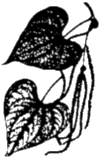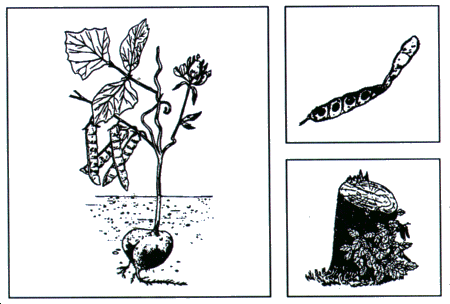 |
 |
 |
 |
| APPENDIX B |

Description: Wood sorrel resembles shamrock or four-leaf clover, with a bell-shaped pink, yellow, or white flower.
Habitat and Distribution: Wood sorrel is found in Temperate Zones worldwide, in lawns, open areas, and sunny woods.
Edible Parts: Cook the entire plant.
|

Description: These plants are vines that creep along the ground. They have alternate, heart-or arrow-shaped leaves. Their rootstock may be very large and weigh many kilograms.
Habitat and Distribution: True yams are restricted to tropical regions where they are an important food crop. Look for yams in fields, clearings, and abandoned gardens. They are found in rain forests, semievergreen seasonal forests, and scrub and thorn forests in the tropics. In warm temperate areas, they are found in seasonal hardwood or mixed hardwood-coniferous forests, as well as some mountainous areas.
Edible Parts: Boil the rootstock and eat it as a vegetable.


Description: The yam bean is a climbing plant of the bean family, with alternate, three-parted leaves and a turnip like root. The bluish or purplish flowers are pea like in shape. The plants are often so rampant that they cover the vegetation upon which they are growing.
Habitat and Distribution: The yam bean is native to the American tropics, but it was carried by man years ago to Asia and the Pacific islands. Now it is commonly cultivated in these places, and is also found growing wild in forested areas. This plant grows in wet areas of tropical regions.
Edible Parts: The tubers are about the size of a turnip and they are crisp, sweet, and juicy and have a nutty flavor. They are nourishing and at the same time quench the thirst. Eat them raw or boiled. To make flour, slice the raw tubers, let them dry in the sun, and grind into a flour that is high in starch and may be used to thicken soup.
|
CAUTION
The raw seeds are poisonous. |
| Updated: 12 January 2008 |
|
Born on 11 January 2000 |